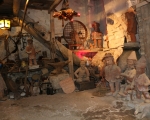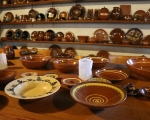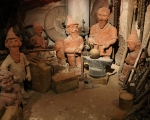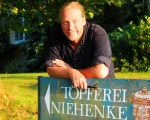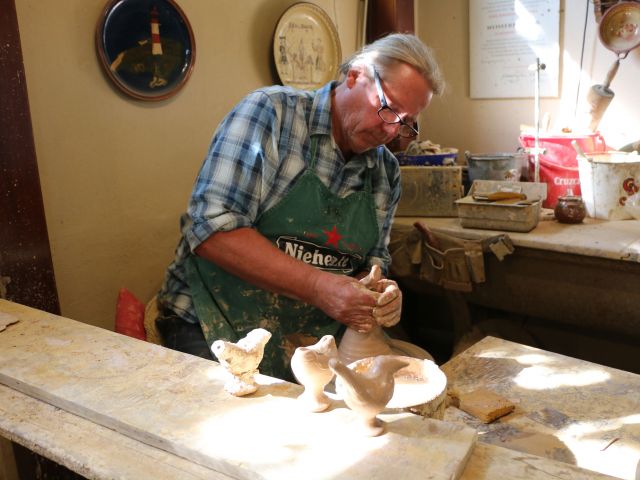Pottery making
Bernd Niehenke – The pottery maker on Hasbergen Hüggel
Hardly anyone in the Osnabrück region embodies an intangible cultural heritage in this area as much as the Pottbäcker Bernd Niehenke. Pottbäcker (pot baker) is a north German dialect word that means something like a master potter. It is indicative of the passion with which Niehenke pursues his craft.
From funnelbeaker to pot
Pottery has a very long history. In some places, one finds ceramics that are thousands of years old and which today provide important insights into the social, artistic, and cultural histories of mankind – for example about the Funnelbeaker culture of more than 5,000 years ago. Pottery traditions developed over centuries, especially in regions with rich clay deposits, where regional products are still made today using traditional handcraft techniques. The largest contiguous clay deposits in Europe are in the Westerwald in the west part of Germany, whose pottery tradition was included in the nationwide UNESCO list of intangible cultural heritages in 2016. Our region is also rich in clay rocks and unconsolidated clay that are millions of years old, but not all of them can be used for pottery.
Niehenke-Pötte (Pottery) since 1895
Bernd Niehenke is the seventh generation of his family to practice the traditional pottery trade. The workshop was originally founded in 1895 in Hagen a.T.W. In 1900, his great-grandfather Bernhard Niehenke moved workshop to the Hasbergen Hüggel. At first, they produced clay tableware in warm earth tones, so-called Näpkes, Kümkes, and Tabakspötte. When in the roaring 1920s, enamel dishes replaced earthenware, they switched to the production to flower pots. In the process, they themselves repeatedly expanded the factory and the machines – sometimes by cannibalizing some wartime vehicles from the world wars.
In the 1970s, the plastic flower pot replaced the clay flower pot. Since then, first Niehenke's father and today Bernd Niehenke himself once again produce the "Näpkes, Kümkes, and Tabakspötte earthenware dishes. These old products, with their traditional patterns, are just as typical of the region as the Hagen Nightingale – an ancient children's toy made of clay.
The Niehenke pottery today
Today, Bernd Niehenke likes to guide guests through the rustic pottery workshop, show them the machines that are over 120 years old, and turn the potter’s wheel on for visitors. He has a story to tell about every item. You can listen to him for hours when he talks about his eventful family history, old craft techniques, machines made from old tank and ship parts, or the legendary Hüggelzwerge (Dwarfs of Hüggel). There is also delicious cake, strong coffee, and of course, lots of pottery for sale.
But see for yourself (video in German):
How is clay created?
Clay consists mostly of clay minerals that are less than 0.002-millimeters (0.0008 inches) in size. They come from older rocks that were weathered by wind and water, transported by rivers into a lake or sea, and deposited there. If many organisms with a calcareous skeleton lived in the water, for example mussels and calcareous plankton, the clay is enriched with lime, a so-called marl.
The Niehenke family initially used the local marl stones from the Triassic shell limestone for their pottery business. The marl was formed more than 240 million years ago in a shallow, warm sea basin. When the deposit was used up, clay was carted to the factory from a clay pit in Hagen-Sudenfeld; and is still used today. Fossils such as the Trigonia mussel and ammonites found in the clay suggest its age. The clay was deposited in a sea about 170 million years ago during the Jurassic period.
In addition to traditional craftsmanship, Bernd Niehenke has another passion that stands for regional intangible cultural heritage: making music in Plattdeutsch – a local German dialect. Such musical evenings are held regularly in the old pottery workshop, with Niehenke picking up the microphone himself. You can get an impression HERE.
